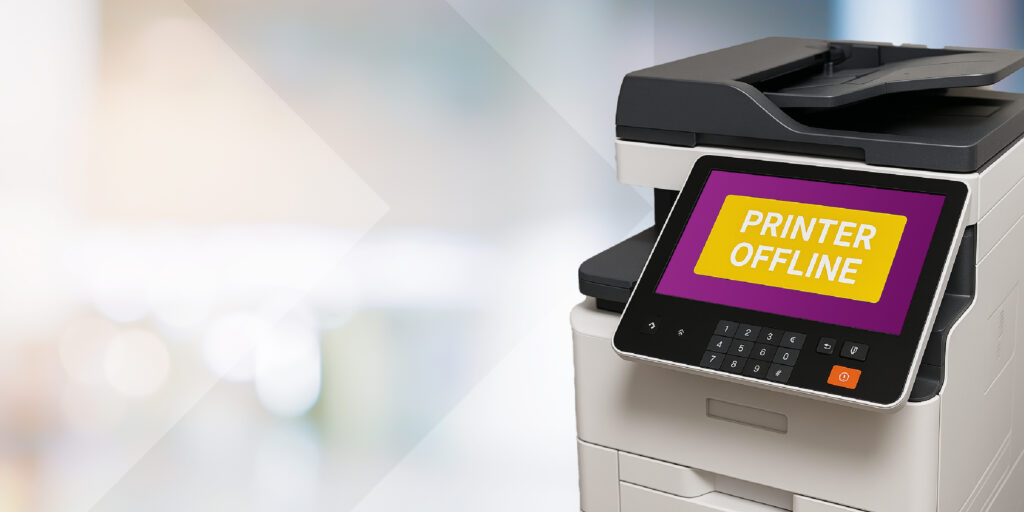You’ve checked the power, confirmed your Wi-Fi, and even restarted your computer and printer, but your device still stubbornly insists it’s “offline.” While many issues can cause this, a less obvious culprit might be silently interfering: your computer’s firewall or antivirus software. These security programs are designed to protect your system, but sometimes they can be overzealous, blocking legitimate communication with your printer.
This PrintSolve.info guide will help you understand how your firewall or antivirus might be impacting your printer’s connectivity on Windows 10 or Windows 11. We’ll provide step-by-step instructions to identify and resolve these software-related blocks, helping you get your printer back online.
Important Disclaimer: PrintSolve.info offers independent, informational guides for printer setup and troubleshooting. We are NOT affiliated with, endorsed by, or sponsored by HP, Epson, Canon, Brother, Microsoft, Apple, or any other printer manufacturer or software company. We do not provide driver downloads directly, remote technical support, or repair services. Our mission is to equip you with reliable information for self-help.
How Firewalls and Antivirus Software Can Block Your Printer
Your firewall acts like a digital guard, controlling incoming and outgoing network traffic. Antivirus programs often include firewall components or network protection features. While crucial for security, if your printer’s communication ports or IP address aren’t explicitly allowed, these programs can mistakenly block the signals exchanged between your computer and printer, making the printer appear offline or unreachable.
This is especially common for network printers (Wi-Fi or Ethernet), as they rely on network communication, which firewalls actively monitor.
Signs Your Firewall Might Be the Problem:
- Your printer was working, but stopped after a software update (Windows, antivirus, or firewall).
- You can access the printer’s web interface (if it has one) by typing its IP address into a browser, but you can’t print.
- Error messages appear about “communication issues,” “network errors,” or the printer being “unreachable.”
- Temporarily disabling your security software allows the printer to work.
Step 1: Temporarily Disable Your Firewall/Antivirus (For Testing Only)
This step helps confirm if your security software is indeed the cause. Remember to re-enable your software immediately after testing.
A. For Windows Defender Firewall:
- Go to Start Menu > Settings > Privacy & security (Windows 11) or Update & Security (Windows 10).
- Select Windows Security.
- Click “Firewall & network protection.”
- Click on your currently active network profile (e.g., “Private network” or “Public network”).
- Toggle “Microsoft Defender Firewall” to “Off.”
- Try Printing: Attempt to print. If it works, the firewall is likely the cause.
- Re-enable Firewall: IMMEDIATELY toggle the firewall back to “On.”
B. For Third-Party Antivirus/Firewall Software:
Locate your antivirus icon in the system tray (bottom-right corner of your screen). Right-click it and look for options like “Disable firewall,” “Stop protection,” or “Exit.” Consult your specific software’s documentation for precise instructions, as this varies widely. Always re-enable it immediately after testing.
Step 2: Add Printer/Port Exceptions to Windows Defender Firewall
If temporarily disabling the firewall resolved the issue, you need to create a permanent rule to allow your printer to communicate.
- Go to Start Menu > Settings > Privacy & security (Windows 11) or Update & Security (Windows 10).
- Select Windows Security.
- Click “Firewall & network protection.”
- Click “Allow an app through firewall.”
- Click “Change settings” (you may need administrator permission).
- Scroll down to find any entries for your printer’s brand or model (e.g., “HP Smart,” “Epson Connect”).
- Ensure both the “Private” and “Public” checkboxes are checked for these entries.
- If your printer’s software isn’t listed, you might need to click “Allow another app…” then “Browse…” to navigate to your printer’s main application or driver executable file (often in
C:\Program Files\YourPrinterBrand). - Click “OK” to save changes.
- Restart Computer: Sometimes a restart is needed for firewall rules to fully apply.
Step 3: Check Third-Party Antivirus/Security Suite Settings
If you use a third-party antivirus program, its firewall component might be the one blocking your printer.
- Open Your Antivirus/Security Suite: Launch your antivirus software from your desktop icon or system tray.
- Navigate to Firewall/Network Settings: Look for sections like “Firewall,” “Network Protection,” “Application Control,” or “Exclusions.”
- Add Exceptions: You’ll typically need to add an exception (or “rule” or “allow”) for:
- Your printer’s IP address (e.g.,
192.168.1.150). - Any printer-related applications or services (e.g., the manufacturer’s printer utility, the print spooler service).
- Specific printer ports (e.g., common ports like TCP 9100, UDP 161, UDP 162. Consult your printer’s manual or manufacturer’s support for specific port requirements).
- Consult your specific antivirus software’s documentation or support website for precise instructions on adding these exceptions.
- Your printer’s IP address (e.g.,
Step 4: Verify Your Network Profile is Set to “Private”
Windows uses different firewall rules for “Public” (less secure) and “Private” (more secure for home/office) network profiles. Ensure your home or office network is set to “Private” for better local device discovery.
- Go to Start Menu > Settings > Network & internet.
- Click on “Wi-Fi” or “Ethernet” (depending on your connection type).
- Click on the name of your connected network.
- Under “Network profile,” ensure “Private network” is selected. If it’s “Public,” change it.
Important: This is an independent guide for general information. For specific model details or official support, please refer to the manufacturer’s official website or your printer’s manual.
Conclusion
A printer that’s “offline” due to firewall interference can be tricky to diagnose, but by systematically testing and configuring your security software, you can often restore vital communication. Remember to always use legitimate software from official sources and to re-enable your firewall after testing to maintain your computer’s security.
